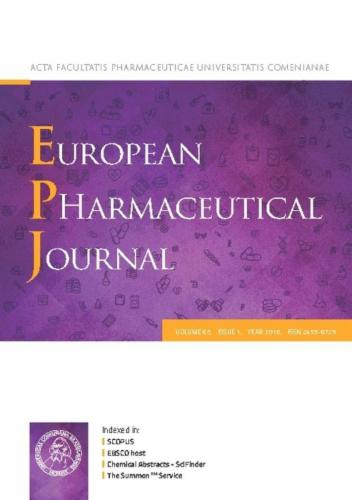突破障碍:新的体外微透析系统能够再现利奈唑胺的体内提取效率。
IF 4.7
3区 医学
Q1 PHARMACOLOGY & PHARMACY
引用次数: 0
摘要
据报道,微创微透析(µD)技术提取利奈唑胺(LIN)的效率(EE)在肥胖患者皮下脂肪组织中为42.8% (95%CI:35.9%-50.2%),非肥胖患者为61.0% (95%CI:54.4%-67.1%)。EE必须在体内测定,因为迄今为止,体外µD系统(LIN的EE=94.1%)无法反映体内的过程和条件。本研究旨在通过模拟组织特征和限制EE的过程,开发一种能够在不同种群中复制LIN体内EE的体外µD系统。基于静态体外µD系统,开发了两种新型系统:(i)通过使用磨珠创建多孔基质来模拟导管周围的人工组织结构(aTS),以及(ii)通过aTS添加周围流动作为人工组织灌注(aTP)。使用aTSµD系统的实验结果显示,EE较低,仅为33.2% (95%CI=31.8%-34.7%),而添加aTP可使EE以aTP为函数增加,最高可达97.2% (95%CI=91.1%-104%)。aTPµD系统成功地复制了LIN的体内EE中值范围,与肥胖和非肥胖的EE相匹配,aTP分别为0.013和0.061 mL/min。通过复制LIN的体内EEs,新型aTPµD系统(aTPMS)为优化临床试验中的µD设置提供了平台,未来的研究需要探索其在其他物质中的应用。本文章由计算机程序翻译,如有差异,请以英文原文为准。

Breaking barriers: The novel in vitro microdialysis system enables reproducing in vivo extraction efficiencies of linezolid
Reported extraction efficiencies (EE) of the minimally invasive microdialysis (µD) technique for linezolid (LIN) varied in subcutaneous adipose tissue of obese 42.8 % (95 %CI:35.9 %-50.2 %) and non-obese patients 61.0 % (95 %CI:54.4 %-67.1 %). EE must be determined in vivo, as in vitro µD systems (EE=94.1 % for LIN) so far fail to reflect in vivo processes and conditions. This study aimed to develop an in vitro µD system capable of reproducing in vivo EE of LIN for different populations by mimicking tissue characteristics and processes limiting EE. Based on the static in vitro µD system two novel systems were developed: (i) mimicking catheter surrounding as artificially tissue structure (aTS) by creating a porous matrix using milling beads, and (ii) adding a surrounding flow as artificial tissue perfusion (aTP) through the aTS. While experiments using the aTS µD system resulted in a low EE of 33.2 % (95 %CI=31.8 %-34.7 %), adding aTP increased EE in a function of aTP, to a maximum of 97.2 % (95 %CI=91.1 %-104 %). The aTP µD system successfully reproduced the median reported in vivo EE range for LIN, matching EE for obese and non-obese at an aTP of 0.013 and 0.061 mL/min, respectively. By reproducing in vivo EEs for LIN, the novel aTP µD system (aTPMS) provides a platform for optimising µD settings in clinical trials, with future studies needed to explore its application to other substances.
求助全文
通过发布文献求助,成功后即可免费获取论文全文。
去求助
来源期刊
CiteScore
9.60
自引率
2.20%
发文量
248
审稿时长
50 days
期刊介绍:
The journal publishes research articles, review articles and scientific commentaries on all aspects of the pharmaceutical sciences with emphasis on conceptual novelty and scientific quality. The Editors welcome articles in this multidisciplinary field, with a focus on topics relevant for drug discovery and development.
More specifically, the Journal publishes reports on medicinal chemistry, pharmacology, drug absorption and metabolism, pharmacokinetics and pharmacodynamics, pharmaceutical and biomedical analysis, drug delivery (including gene delivery), drug targeting, pharmaceutical technology, pharmaceutical biotechnology and clinical drug evaluation. The journal will typically not give priority to manuscripts focusing primarily on organic synthesis, natural products, adaptation of analytical approaches, or discussions pertaining to drug policy making.
Scientific commentaries and review articles are generally by invitation only or by consent of the Editors. Proceedings of scientific meetings may be published as special issues or supplements to the Journal.

 求助内容:
求助内容: 应助结果提醒方式:
应助结果提醒方式:


